In Cusco, Peru, you can rent a comfortable apartment with incredible views of the Andes for only $200 a month.
“I can easily afford to indulge myself whenever I want,” says expat Rob Schneider. “Between breakfast, renting a catamaran, and dinner for two, I came away with change out of the $25 I had in my pocket this morning.
“What would I have back home? The best I can imagine is a small apartment far from the beach and a nine-to-five job or—now that I’m in my late 60s—a pension that would barely cover my basic expenses. Maybe I could scrape enough money together to take a bus to the beach on weekends, but I certainly couldn’t afford to go sailing.”
By choosing to retire in one of the world’s best bang-for-your-buck destinations, Rob enjoys a lifestyle well beyond his reach if he had stayed in the U.S. Every day he can choose to relax on the beaches around his home in the town of Sihanoukville, on the Cambodian coast, dine on fresh French croissants…rent a sailboat or go fishing on an offshore charter…
The world is full of affordable destinations where your dollar goes further (and further still at the moment, given the greenback’s current strength).
But some places just truly stand out for the value they offer you. While filling a tank of gas, getting the week’s groceries, paying rising health insurance premiums, and making all the other ends meet costs us more back home…thousands of folks have discovered that there are places overseas where even a little goes a long, long way.
In this article, we take a look at the five best-value retirement spots on our beat. In all five countries, you will find places where $1,200 to $1,500 a month covers you for housing, healthcare, food, fun…the whole nine yards. And that’s for a couple. If you’re flying solo, you can call these places home for even less. In some of these havens, it’s perfectly possible to live well off a Social Security check. Many expats have relocated to these places for this very reason.
And these places aren’t simply “cheap.” Your dollars will stretch to hiring a maid, a gardener, and eating out often. Get a massage for just $10, rent a cozy apartment with stunning mountain views for less than $200 a month, and enjoy full coverage at a private hospital for only $500 a year…
Choose from beach towns with white sands and palm trees, thriving cities with great food and a pulsating cultural scene, quiet jungle retreats, and scenic mountain towns. In these countries (spanning three continents), you’re guaranteed to find a place that fits every lifestyle. Whatever your ideal retirement looks like, these destinations have you covered. Read on to find the low-cost, great-value retirement hot-spot that’s perfect for you.
Learn more about the best places in the world to retire in our daily postcard e-letter. Simply enter your email address below to sign up for our free daily postcards and we’ll also send you a FREE report on The World’s Top 10 Retirement Havens, plus access to over 10 more free reports. Our gift to you, on our favorite destinations.
Get Your Free Report on the World’s Best Places to Retire:
1. Peru: Low-Cost Living in the Andes
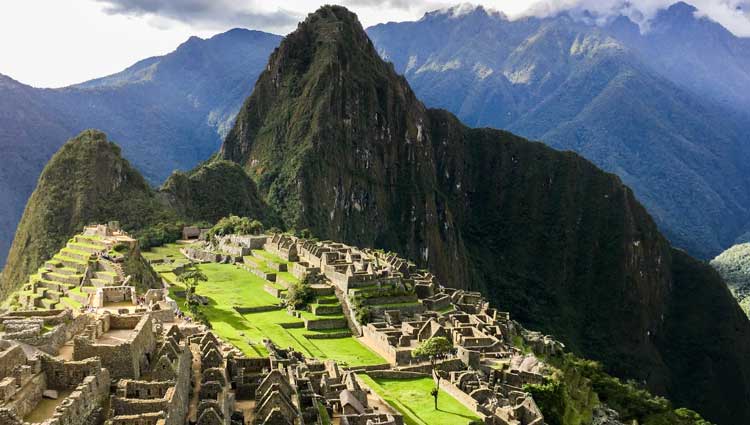
Stretching from the high Andes to the vast Pacific Ocean, Peru is a country of extremes. With its colonial cities, ancient ruins stretching back to antiquity, and long stretches of pristine beach, Peru has a wide diversity of lifestyles to offer you. But the one constant you can be guaranteed anywhere here is affordability.
“Peru is amazingly affordable,” says IL’s David Hammond, who explored the country last year. David—a longtime expat who has traveled across Latin America—found in Peru the most affordable country he’s yet been to in the region.
“The cities I visited in Peru offer the highest standard of living for the lowest price that I’ve seen, especially for singles. Granted, there are places you may be able live for less, but not on the same levels of convenience and comfort. Several single expats I met in the cities of Cusco and Arequipa report living comfortably on $500 to $600 a month. That includes everything—all rent and utilities, WiFi service at home, eating out regularly, and a local pre-pay cell phone. Expat couples can live comfortably in Peru for $1,000 to $1,200 a month, including everything.”
Expat Ocean Malandra has known this for a long time. Bang for your buck is one of the main reasons he relocated to Cusco. Here, he gets to enjoy life in a city with colonial charm, spectacular mountain surrounds, and great food. (Peru is a foodie paradise, drawing influence from the numerous cultures that have settled there over the centuries.)
“I pay around $200 a month for a nice one-bedroom apartment in the San Blas area,” says Ocean. “The rent includes high-speed internet and all utilities. I also have incredible views of the city and of the snowcapped peak of Ausangate.
“I often eat lunch at the market for as little as $2. That price gets me a quinoa soup, a plate of fresh local trout and rice, plus a hot tea. It’s delicious, healthy, and cheap—unbeatable. You can spend $5 to $15 and feast on anything from Japanese sushi to Spanish tapas. Cusco offers food choices to meet any taste or budget, but the quality is high, no matter what you pay.”
Other expenses for a couple are similarly low.
“Groceries at the local supermarket will cost around $100 a month,” says Ocean. “Transportation (bus and taxis) can easily be covered by $50 a month. The same amount will also cover your cell phone and internet. Healthcare (including dentist) is inexpensive, at $50 to $100. Entertainment costs vary widely, depending on your interests, but for things such as movies, concerts, and nightclubs, $200 a month will certainly suffice.”
And he’s not the only one living this lifestyle, as more and more expats wake up to the wonderfully affordable options Peru has to offer.
“I live in a brand-new, two-bedroom apartment, with awesome views and all the modern amenities, for $400 a month,” says expat Lisa McKellan, who also lives in Cusco.
“I live well without having to work around the clock,” says Olley Ollerenshaw, who supports himself creating custom maps of Peru’s famous Inca Trail. “Everything about the lifestyle here supports having time to enjoy life, instead of working to stay ahead of the bills.”
In Arequipa, Peru’s “White City” of nearly a million people, you have modern shopping malls and hospitals close at hand, and you can rent a two-bedroom apartment with a terrace for $350 a month, or even less. Other costs are similarly low.
“Arequipa has a year-round, spring-like climate,” says David Hammond. “So there’s no need for heating or air conditioning. Most people living here get by fine without a car. And you’ll find a variety of great restaurants, including many places where you can enjoy a tasty meal for $3 to $5.
“The set lunch I ordered started with a cream-based soup with rice, a boiled potato, squash, corn, and steak. The main dish that followed was a grilled chicken breast, with rice and a small salad. To drink, I was served a pitcher of fresh, local papaya juice. Then Jell-O for dessert. The total lunch bill: $3.34.”
2. Cambodia: Southeast Asia’s Most Affordable Haven

Sandwiched between Thailand, Vietnam, Laos, and the Gulf of Thailand, Cambodia offers a truly fantastic retirement experience, whether you’re thirsting for adventure or just want laidback beach living. Lush rainforests teem with exotic animal life. There’s no shortage of resplendent Buddhist temples to see. And at spots like Sihanoukville, you have some of the best beaches in Southeast Asia.
“The cost of living in Cambodia is so low that my bills only total around $1,200 a month, without having to budget,” says Brett Dvoretz, who lives in Sihanoukville. “I eat out wherever and whenever I want; a drink runs you $2, and I can have a fresh-cooked meal at a restaurant for as little as $2.50.”
“You can dine on $3 barbecues and 50-cent beers in a lounge chair on the beach at sunset, instead of inside a covered restaurant,” says Rob Schneider, who, like Brett, also found his ideal retirement in Sihanoukville.
In cities like Phnom Penh, you’ll find plenty of modern conveniences and delicious food that draws on Chinese and Khmer cuisine, as well as on Cambodia’s French colonial heritage.
Steven King has lived in Phnom Penh since 2006, after being attracted by the country’s exotic charms as well as by its fantastically low cost of living. “I had spent over a year traveling across Southeast Asia and was used to living on a budget. But I was shocked at how cheap Cambodia proved to be. Not only did I discover that the Cambodian people are incredibly friendly and welcoming to foreign visitors, but it amazed me that, even compared to affordable countries like Thailand and Malaysia, the cost of daily living was incredibly low.
“I know many retired expats who moved to Cambodia because their Social Security can more than cover their monthly expenses. And though many came to the country due to its affordability, they have stayed here because of the warm culture of hospitality among the local people.
“My first rental was a one-bedroom apartment with a spacious living room and picturesque balcony, located in the most sought-after part of Phnom Penh. It cost me less than $200 a month, while my basic utilities were extremely affordable: The cable television set me back only $5 a month, the water bill was $10, and regular garbage pickups just $2. Over nine years later, these prices haven’t risen at all.
“Cambodia is a country that has a lot in terms of food, and it doesn’t take long to figure that, if a restaurant is popular with locals, then likely it is offering good-quality food at very reasonable prices. My favorite meal of the day in Phnom Penh is a breakfast of fried pork with steamed rice and pickled vegetables, plus an iced coffee, which all together costs less than $2.”
“Luxuries that I’d never allow myself at home are easily affordable,” says Lina Goldberg. “I can have a pair of leather shoes made to order for $22, a dress tailored for not much more than that, and a weekly manicure for $6. For transport I take tuk-tuks, which get me anywhere in Phnom Penh for between $1 and $3.”
“Most expats can live comfortably on a budget of around $1,250 to $1,500 a month,” says Ellie Dyer, who also calls Phnom Penh home. “It’s easy to tailor life to your means, whether that involves eating street food on a shoe-string budget or living the high life at luxury hotels like Raffles Le Royale. Eating out is very affordable and many expats frequent restaurants daily. A good Cambodian barbecue meal can cost less than $5 per person. World cuisines, especially French fare, are well represented in Phnom Penh, with meals costing from $5 to $15.
“You can rent one-bedroom apartments from as little as $200 a month, but expect to spend upwards of $350 for a good option in the center of town.”
This rings true for other parts of the country, even popular coastal areas like Sihanoukville.
“It’s hard to complain when you can rent an air-conditioned, one-bedroom apartment for $250 a month, or a Western-style, furnished studio apartment with a fan for as little as $120 a month,” says Rob Schneider. “After you’ve been here a little while, you’ll be able to find even better deals through your new Cambodian and expat friends.”
3. Guatemala: Healthy Living on $1,500 a Month
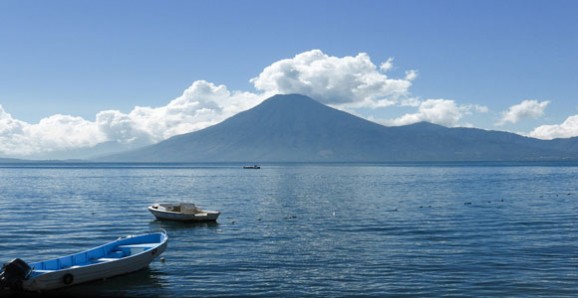
“I really love my life in Guatemala. The low cost of living makes me feel that the opportunities here are endless, and I feel like I can really carve out my little spot here in paradise,” says expat Tara Tiedemann of her life in colonial Antigua, a gem at the heart of Guatemala.
“It’s amazing how far your money goes in Guatemala. For $500 a month, I can rent a beautiful apartment in a colonial-style building right in Antigua. I’m within walking distance of the Central Park and my favorite bakery for fresh banana bread. I spend less in one month on fresh groceries from the local market than I used to spend in one trip to the supermarket in the States.”
Bordered by Mexico, Belize, Honduras, and El Salvador, Guatemala also touches the Caribbean and the Pacific. Between the shores on either side, you’ll find a wealth of Spanish colonial towns and cities (like Antigua, where many expats choose to settle), as well as tropical jungles and verdant grassland.
Guatemala is not as developed as more established expat havens in Central America, such as Panama or Costa Rica. This is still very much a developing country. But if you’ve an appetite for adventure, then this could be the place for you. Pretty much every outdoor activity you can think of is catered to. And the warm weather and cheap, farm-fresh produce make it easy to enjoy a healthy retirement all year round.
“I’m able to get a week’s worth of produce for around $12,” says Tara. “I’m not skimping, either; I load up on whole pineapples, watermelons, cantaloupe, heads of broccoli, and vine-ripened tomatoes. It’s a lot easier to incorporate healthy whole foods into your diet when they are as flavorful and affordable as they are in Guatemala.”
All told, a couple can comfortably call Guatemala home for $1,500 a month. For that, you’ll get a gardener and house cleaner ($3 each an hour), regular massages ($10 each), and three-course meals for only $20, among other little luxuries. And if you’re after an affordable colonial property to call home during your retirement, this is a country to consider.
“There are lots of housing options in and around colonial Antigua,” says Tara Tiedemann. “Rents within the city limits run anywhere from $200 a month for a small one-bedroom apartment to $700 a month for a fully furnished, restored colonial house.”
If you want a modern home, the same budget will see you spoiled for choice in Guatemala.
“Rentals for one-bedroom furnished apartments in town start around $300 a month,” says expat Lucy Brown in Antigua. “A cabin-style studio apartment with parking, in a safe, quiet area, will go for around $350 a month, including internet, cable TV, and all utilities. You can get a beautiful, furnished, three-bedroom house in a quiet gated community, with a living room, two bathrooms, garden, and rooftop patio with gorgeous views, for $700 a month.”
Buying and building can be cheap in some parts of the country, as many in Guatemala’s growing expat community along the Río Dulce can attest.
“Land is very affordable around here,” says Casey Brooks. “Lots large enough to build a home along the river run about $7,000. If you want property on higher ground, you can find large parcels for between $30,000 and $40,000. I know a guy who bought an entire peninsula for $50,000.”
As with any move abroad, expats often fret that the healthcare they receive will be poor. Not so in Guatemala. Although the general healthcare infrastructure may not be as developed as the likes of Costa Rica or Panama, you can still find great care in the capital. And—as with everything here—it’s for a small fraction of the cost back home.
“I recently went in for a routine physical and the doctor spent over an hour with me, discussing my medical history and putting me at ease,” says Tara Tiedemann. “What a delight—when I can barely secure 10 minutes with my overworked U.S. physician. And the price for this personalized, high level of care? Only $25, including lab work.”
4. Nicaragua: Best-Value Retreat in Central America
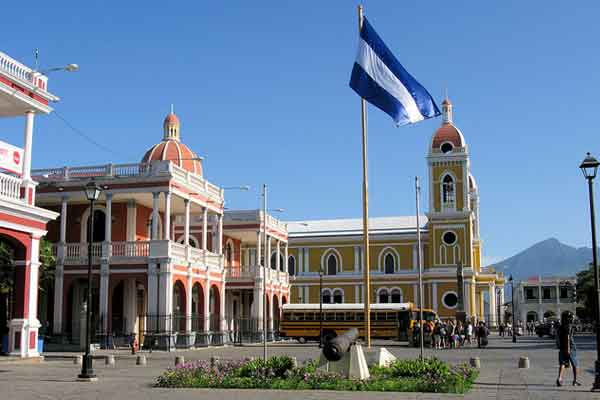
“It really is so cheap to live here. I knew that before I got here, but when you actually live it, it’s incredible,” says Dawn Noel of her life in Nicaragua.
Long overshadowed by its neighbors to the south (Costa Rica and Panama), Nicaragua offers many of the same benefits (healthy lifestyle, great food, terrific beach living) for an even lower cost. This great value has seen thousands of U.S. expats pursue a retirement here in recent years. After all, in this country a complete meal with wine will set you back only $16. And for less than $8 a day, you can get yourself cleaning and gardening help to maintain that beachside apartment or colonial house you now call home.
“One great thing is that I don’t have to think twice about eating out, because the prices are so reasonable,” says Dawn, who lives in the beach town of San Juan del Sur. “I can go to town and have anything from a $1 taco or mini fish carpaccio to $12 for a lobster meal, seafood soup, or filet mignon. I’m actually able to do more here than I did in the States, just because things are so cheap.”
IL Nicaragua Correspondent Bonnie Hayman enjoys a home with ocean views in San Juan del Sur, which she could never have afforded back home in San Diego. “I would never have been able to live in an ocean-view home in the States. But in Nicaragua I found a beautiful two-bedroom, two-bathroom home on almost an acre, with an ocean view, for only $132,000,” she says. “I pay real estate taxes of just $151 a year.”
From here, she has a perfect base from which to enjoy the other low-cost delights of her new home. “If the mood takes me, I can go to a nearby restaurant for a fresh red snapper ($8) and the best mojito in town…or to another restaurant for international fare like a chicken-curry rice bowl or a fish filet with orange-chili sauce for the same price. Fish tacos for $1, veggie wraps for $5, a raw-food sandwich for $6, fresh-out-of-the-oven cinnamon buns, sushi…you can satisfy any craving here.”
Rentals in Nicaragua are also highly affordable—try a furnished apartment within a short walk of the beach for $400 a month or less.
“Many of my friends here rent furnished apartments or vacation homes at prices as low as $300 a month for a one-bedroom furnished apartment with water, electricity, and WiFi included,” says Bonnie.
These low prices also extend to building. “It cost $147,000 to build what we wanted,” says Fred Batty, who together with his wife Carla has built a profitable hostel in San Juan del Sur. “At 6,000 square feet, that’s about $24 a square foot. You can contract laborers here for around $1.25 an hour.”
You’ll also save a pretty penny on healthcare here, as expat Michael Hayden (who lives in the colonial city of Granada) can attest. “Dentists here are cheap—I had a couple of wisdom teeth pulled for $10 each,” he says. “I had a bridge done for $150, and the private hospital nearby offers health insurance at $500 a year.”
With volcanic soils and a climate suitable for growing a huge variety of crops, Nicaragua has plenty of fresh produce. “Produce in Nicaragua is very reasonably priced, from the street vendors or the market,” says Marti Owens, who lives in Granada. “A dozen limes cost about 70 cents; large avocados are $1 each; a small watermelon is $1; a fresh, fabulous pineapple is a mere 65 cents; and a coconut right off the tree, with healthy coconut water, is only 50 cents. (Compare that to $3 for a can of coconut water in the U.S.) Not only do we eat cheaper here, but we eat better, too.”
All told, with $1,200 a month to spend, you can find yourself a wonderful retirement in Nicaragua, regardless of the lifestyle you’re after. Stretch it to $1,500 a month and you can live very comfortably here.
“Here in San Juan del Sur I live a six-figure lifestyle on $1,500 a month,” says Canadian expat Adrienne Greenwood. “I can live here for much less, have a better quality of life, and have full-time help for $200 a month that would have cost $2,000 in Vancouver.”
“We spend a total of $1,089 a month to live on this beautiful island,” says Debbie Goehring, who lives with her husband on Ometepe Island, at the heart of Lake Nicaragua. “With a huge garden and tropical fruit trees in our yard, we spend only $25 a week on groceries. For healthcare, we opted to join the Vivian Pellas Metropolitano Hospital health discount program in the capital, Managua. Built to U.S. standards, this hospital provides excellent services to expats at about a quarter of what it would cost in the U.S.”
5. Colombia: First-World Comforts for Pennies on the Dollar
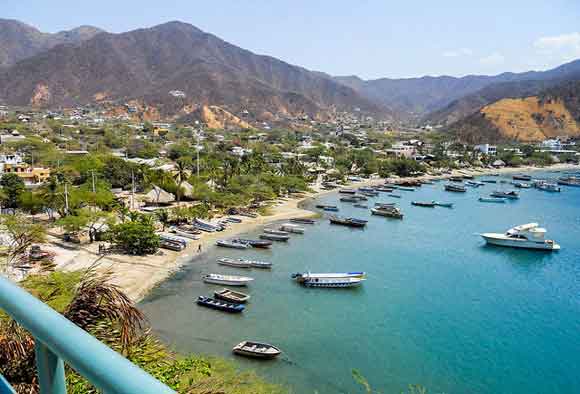
For decades, all that seemed to come out of Colombia was bad news. But in more recent times, peace (and the prosperity that has stemmed from it) is transforming this country into one of Latin America’s top retirement hot-spots.
In today’s Colombia, you’ll find healthcare on a par with North America—for pennies on the dollar, to boot. Vibrant metropolises like Medellín teem with terrific dining options and a coffee culture, plus all the amenities a retiree would need. The highlands are home to striking colonial cities to match any you’ll find in South America. Its range of elevations and equatorial location ensures you’ll find a climate perfect for you. And all this can be yours for as little as $1,200 a month (for a couple), all in.
“Life is very enjoyable when dinner for two at delicious restaurants costs only around $25, going to the movies is $5 per person, great haircuts are $18, mani/pedis at a nice salon are $7, and treating myself to weekly, 75-minute massages only costs $30,” says expat Elizabeth Brown, who lives with her partner in Medellín. “I have never taken better care of myself than now, and I do all this without breaking the bank. These little luxuries are astronomical back home in San Francisco.
“Our daily cost of living is significantly lower than in most U.S. cities. A total month of groceries for the two of us, all organic and delivered, costs less than $100. Our fully furnished, three-bedroom apartment with two living rooms, in one of the most coveted areas of Medellín, is only $800 a month. And a 10- to 20-minute taxi ride costs as little as $2 to $5, making it easy to travel around the city without a car.”
Other expats across the country agree that you can find a wonderfully low-cost life in Colombia.
“The affordable cost of living is one of the things that drew me here,” says Jim Engels, who found his ideal haven in Bogotá. “I’m paying just $640 a month for a two-bedroom apartment. The healthcare is both inexpensive and high quality. You’ll find many physicians who have been trained in the U.S. or Western Europe.”
Michael Evans has been a long-time resident of Colombia. He’s traveled the country far and wide. And wherever he’s been, he’s found spots where $1,200 to $1,500 a month would be more than enough to cover all of a couple’s expenses.
“A couple could live comfortably on $1,200 a month,” he says of the city of Pereira, a popular expat haven in Colombia’s Coffee Triangle. “A menú del día lunch costs $3 to $5 and a three-course dinner typically costs $10 to $20. You can buy a liter of milk and loaf of bread for under $4, catch a movie for less than $5, and enroll in a gym for $50 a month or less.”
The same rings true for Manizales, another city within Colombia’s famed coffee-growing region.
“You don’t need wads of cash to live a fabulous life here. Rents range from $130 a month for a comfortable home in a working-class neighborhood, complete with amazing views of the surrounding mountains, to $430 for a modern three-bedroom, two-bathroom apartment in more upscale neighborhoods like Milán. And to keep it clean, hire a housekeeper for under $20 a day.”
Learn more about the best places in the world to retire in our daily postcard e-letter. Simply enter your email address below to sign up for our free daily postcards and we’ll also send you a FREE report on The World’s Top 10 Retirement Havens, plus access to over 10 more free reports. Our gift to you, on our favorite destinations.
Get Your Free Report on the World’s Best Places to Retire:
Related Articles
Cheapest Places to Live in the World
Best Places to Live in the World
Upcoming Conferences
The Only 2024 Fast Track Panama Conference
If your dream retirement involves stunning beaches… lush green mountains… a warm climate with no hurricanes… first-rate healthcare… incredible value for money (a couple can live well on $2,200 a month)… and the World’s #1 Retiree Discount Program…
Join our Panama experts and expats in February and discover why Panama could be your perfect paradise.

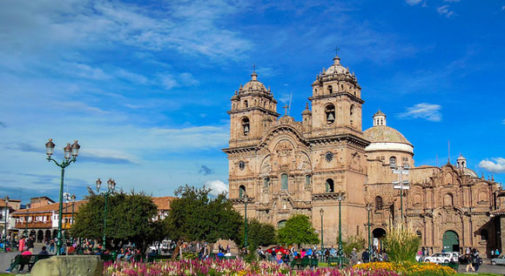
.png)